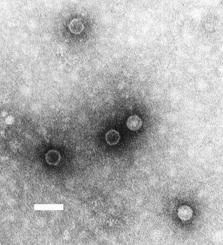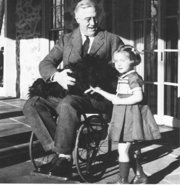After the World Health Assembly of the World Health Organization (WHO) resolved in 1988 to eradicate poliomyelitis globally, the number of countries in which polio is endemic declined from 125 to six by 2003. However, in 2004, polio cases caused by wild poliovirus (WPV) originating from northern Nigeria were reported in 11 countries--Benin, Botswana, Cameroon, Guinea, Mall, Saudi Arabia, Burkina Faso, Central African Republic, Chad, Cote d'Ivoire, and Sudan--reestablishing transmission * in the latter five countries. Sudan, a member state of the WHO Eastern Mediterranean Region, initiated poliomyelitis eradication activities in the northern area of the country in 1994 and in the south in 1998. Since 1998, Sudan has made substantial progress in implementing polio eradication strategies, with no WPV reported from May 200l through April 2004 (1). However, in May 2004, a WPV case was detected in West Darfur (2), and a polio outbreak is currently affecting 17 of the country's 26 states (3). This report describes the outbreak and response and provides an update on acute flaccid paralysis (AFP) surveillance and supplementary immunization activities (SIAs) in Sudan. The outbreak underscores the importance of continued SIAs in polio-free countries with low routine vaccination coverage, even in areas with moderate to low population density, as well as the need to ensure uniformly high-quality AFP surveillance.
Routine Vaccination
The Sudanese Ministry of Health reported that 74% of infants had received 3 doses of oral poliovirus vaccine (OPV3) in 2003, whereas WHO and the United Nations Children's Fund (UNICEF) estimated national OPV3 coverage in Sudan to be 50% for the same year. However, OPV3 coverage in conflict-affected southern Sudan is estimated to be substantially lower than national estimates.
Supplementary Immunization Activities
Sudan conducted two rounds of National Immunization Days (NIDs) ([dagger]) annually during 1998-2002; approximately 7 million children were vaccinated each round during 2001-2000 (1). After 2 years of conducting NIDs but detecting no new WPV cases, Sudan discontinued nationwide immunization campaigns; however, Sudan continued to conduct Subnational Immunization Days (SNIDs), resulting in vaccination of 68,000-3 million children per round during 2003 (three rounds) and the first half of 2004 (two rounds) (Figure 1).
[FIGURE 1 OMITTED]
After WVP type 1 (WPV1) was detected in May 2004 in West Darfur, statewide immunization activities were conducted in North, South, and West Darfur states in July and August 2004 (West Kordofan was also included in August 2004), resulting in vaccination of 1.0 million and 1.4 million children during those periods, respectively. In addition, two rounds of immunization activities were conducted in Bahr El Gazal states in August and September 2004, resulting in vaccination of approximately 500,000 children during each round. NID rounds conducted in October and November 2004 reached an estimated 7.6 million children. An additional round was conducted in December 2004 in parts of Upper Nile after the detection of a WPV1 case there in November. Although high coverage (95%) was reported for the 2004 rounds, certain areas of southern and western Sudan were not accessible because of conflict.
AFP Surveillance
The key WHO-recommended indicators for monitoring AFP surveillance quality are the rate of AFP cases reported (target: [greater than or equal to]1.0 per 100,000 population aged <15 years) and the percentage of AFP cases for which adequate specimens ([section]) were collected (target: [greater than or equal to] 80%). Both north-central and southern Sudan exceeded the targets for AFP surveillance quality in 2002 (AFP rate: 2.6; AFP cases for which adequate specimens were collected: 90%), although population denominators for southern Sudan are uncertain. Nationally, surveillance quality, remained high through 2003 and 2004, although several states (six in 2003 and five in 2004) were below recommended levels for surveillance quality indicators.
WPV Incidence
The last WPV1 case detected in Sudan before the current outbreak was identified in April 2001 in Unity, state, southern Sudan. The first case of the outbreak was detected in May 2004 in West Darfur, and the outbreak is currently affecting 17 of 26 states (109 WPV1 cases in 15 states and three WPV type 3 [WPV3] cases in three states) (Figure 2); both WPV1 and WPV3 were detected in one state (Unity). Although six cases have been reported in six states since the second NID round in November 2004, the epidemic curve suggests a waning of the outbreak, after accounting for reporting and laboratory delays (Figure 1). As of January 14, the last case detected with WPV had a paralysis onset date of December 14.
[FIGURES 1-2 OMITTED]
The first WPV1 case in 2004 had a paralysis onset date of May 20 in West Darfur. Seven weeks later, two WPV1 cases were reported from South Darfur; 10 total cases have been reported from South Darfur as of January 14. By the end of 2004, major clusters of WPV1 cases were present in two additional states, Khartoum (41 cases) and Red Sea (22 cases). The first WPV1 case from Khartoum state had a paralysis onset date of August 31, 2004; the first case reported from Red Sea state had a paralysis onset date of October 20. Genetic sequencing results indicate that 70 (95%) of 74 WPV1 isolates sequenced were closely related to WPVs originating in northern Nigeria and Chad. Isolates from four WPV1 cases from Umbada and Karary localities of Khartoum state belong to a different genetic lineage with an undetermined geographic source.
Before the current outbreak, WPV3 was last detected in Sudan in River Nile state in 1999. The first WPV3 case in 2004 (West Kordofan) had a paralysis onset date of July 9. Subsequently, two additional cases were reported, one from Unity (July 29, 2004) and one from Jonglai (September 7, 2004). All 3 WPV3 isolates detected during 2004 belong to the same WPV3 genotype (East Africa), which includes the WPV3 case from River Nile in 1999, suggesting undetected WPV3 transmission.
Editorial Note: Despite Sudan's continued commitment to polio eradication, a large polio outbreak occurred in 2004, affecting 17 states. Although multiple SNIDs were conducted after NIDs ceased in 2002, the magnitude and spread of the outbreak indicates substantial gaps in population immunity. This poliovirus outbreak confirms the importance of continued SIAs for polio-flee countries with low routine vaccination coverage, even in areas with moderate to low population density, such as those found in Sudan. It also underscores the need to ensure that surveillance quality is uniformly high throughout the country, especially in areas with continued armed conflict and difficult access; genetic sequencing suggests that WPV3 transmission in Sudan might have gone undetected for >36 months.
Despite the cessation of NIDS in 2002, the Sudanese Ministry of Health and national and international polio partners in Sudan responded rapidly to the outbreak. Large-scale subnational SIAs were planned and implemented in a timely manner in western Sudan under geographically and politically difficult conditions. Surveillance data indicating a possible waning of the outbreak suggests that the 2004 SIAs have had an impact on breaking chains of WPV transmission.
The global eradication initiative should increase efforts to stop transmission in Sudan to prevent further spread into neighboring countries. A SNID was conducted in January 2005 in all but four states in the south and will be followed by three NID rounds in February, March, and April. The peace agreement signed in January 2005 by the Sudanese government and the country's main southern rebel group might increase access to children living in conflict-affected areas in the south. Despite progress, the need remains to ensure safe access to vulnerable groups of children, especially in the western and southern parts of the country. Furthermore, the reintroduction of WPV in multiple western and central African countries and the outbreak in Sudan illustrate the continued risk of WPV importation and spread posed by areas where polio remains hyperendemic, such as northern Nigeria.
* Country with continued transmission >6 months after importation.
([dagger]) NIDs involve mass immunization campaigns over short periods
(days to weeks) in which OPV is administered to all children in the target age group (usually those aged <5 years), regardless of previous vaccination history. These campaigns consist of at least two rounds, in which the consecutive dose(s) are administered approximately 4 weeks apart.
([section]) Two stool specimens collected [greater than or equal to] 24 hours apart within 14 days of paralysis onset and received in the laboratory in acceptable condition.
References
(1.) CDC. Progress toward poliomyelitis eradication--Ethiopia, Somalia, and Sudan, January 2001-October 2002. MMWR 2002;51:1070-2.
(2.) World Health Organization. Poliomyelitis eradication in Africa--update on importations. Wkly Epidemiol Rec 2004;79:253-4.
(3.) World Health Organization. Poliomyelitis outbreak escalates in the Sudan. Wkly Epidemiol Rec 2005;80:2-3.
Reported by: World Health Organization (WHO) Sudan Office, Khartoum, Sudan. WHO Southern Sudan Liaison Office, Nairobi, Kenya. WHO Eastern Mediterranean Regional Office, Cairo, Egypt. Vaccines and Biologicals Dent, WHO, Geneva, Switzerland. Div of Viral and Rickettsial Diseases, National Center for Infectious Diseases; Global Immunization Div, National Immunization Program, CDC.
COPYRIGHT 2005 U.S. Government Printing Office
COPYRIGHT 2005 Gale Group




